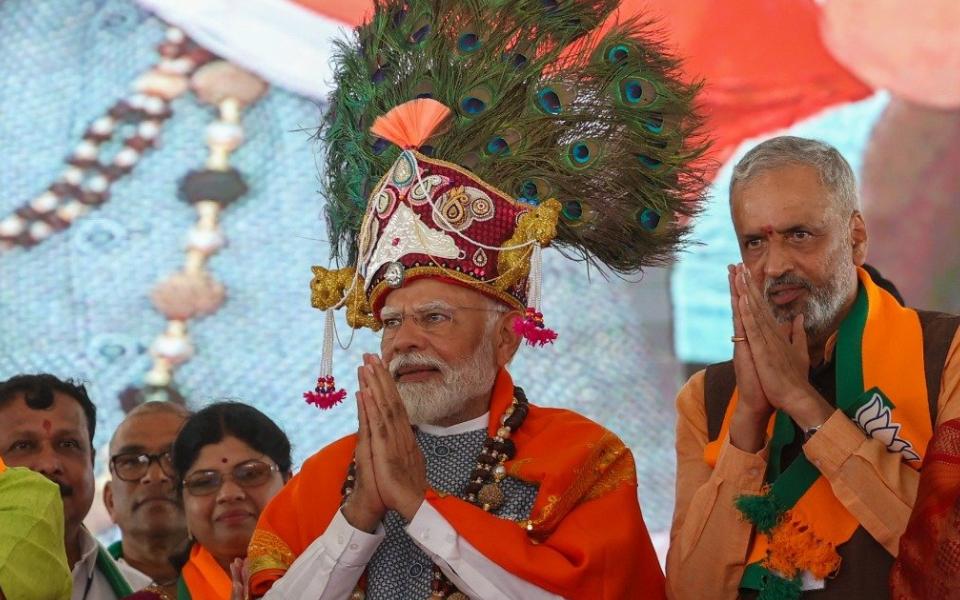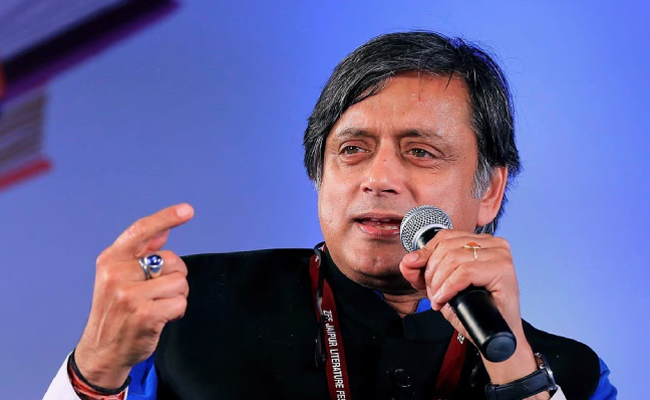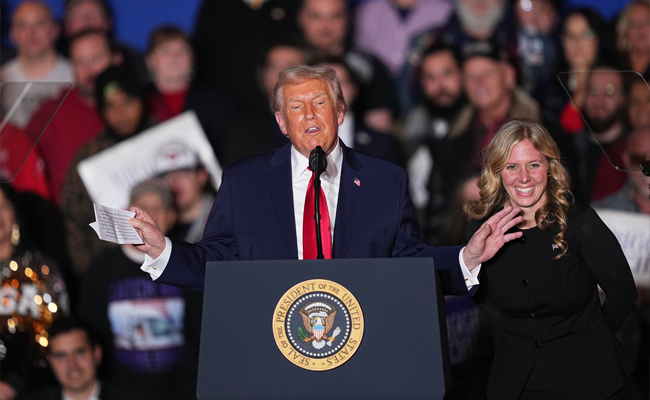Davangere, Apr 28: Prime Minister Narendra Modi on Sunday claimed that the INDIA bloc has come up with a "formula" whereby the parties in the opposition alliance will get the PM's post for one year each if they come to power. "With such a system, the good of the country cannot be expected," he said at an election rally here, as he urged the people not to waste their vote.
"I have heard that the INDI Alliance has invented a new formula...if the country has to be given into someone's hands, will we think before giving it or not? Will you give it to anyone? We will think whether the person is able to handle the country or not, will the track record be analysed or not?" Modi asked the people.
Questioning the INDIA bloc on which person or leader among them could the people hand over the country's responsibilities to, he asked, "Is there any name? Will you accept without any name, keeping you in the darkness? Will the country accept it?"
He claimed, "So they (INDIA bloc) have come up with a formula, to make everyone happy. If they get the opportunity for five years (to govern), they have told their alliance partners that each one will get one year of prime ministership. This means one year, one PM, next year second, then third, fourth and fifth..."
ALSO READ: CM Siddaramaiah challenges PM Modi's statements on Congress manifesto
Wondering what would happen to the country and the people if this becomes the "situation", the prime minister said: "Do you see the good of the country (happening) with such things? Do you see good in it for you and your children? Will you waste your vote for such a thing? Your vote is precious, please don't waste it even by mistake."
Former chief minister and party candidate from Haveri Basavaraj Bommai and Davangere BJP candidate Gayatri Siddeshwara were among others party leaders present at the rally.
Pointing out that a game of political one-upmanship is on in the Karnataka Congress "between leader one and leader two" (referring to CM Siddaramaiah and Deputy CM D K Shivakumar), Modi said they lack vision for the progress of the state.
"Due to its factionalism, nepotism, bad policies, Congress is playing with the future of youth, farmers and common citizens. Look at Karnataka Congress's situation -- 2.5 years he will be there (in CM post), next 2.5 years you come (indicating to the alleged plans for rotation of CM post between Siddaramaiah and Shivakumar)," he said.
Targeting the Karnataka Congress government for putting the brakes on the New Education Policy, Modi claimed that they had cancelled it to keep their vote bank happy.
"The biggest loss because of this has happened to the youths...we may have political differences, but none has the right to destroy the future of the people," Modi said.
Karnataka has become the victim of the Congress's governance model under which they made a great sin of indulging in corruption and scams of crores of rupees, he said.
Accusing the Congress of creating a number of fake beneficiaries of government schemes in the name of the downtrodden, and claiming that this was their model of corruption, the PM said, "They have mastery in corruption. Our government has removed about 10 crore such fake beneficiary names and have put a lock on their (Congress) corruption."
The number of fake beneficiaries on paper was more than Karnataka's total population, and the money used to go from the government treasury, he claimed. "They used to usurp thousands of crores of money with the fake names, and this money used to go to Congress's ecosystem," he further claimed.
"Modi by Aadhaar and DBT has put an end to it and the money is now going to genuine beneficiaries," he went on to claim.
Modi also accused the Congress government in Karnataka of diverting Rs 11,000 crore from the SC/ST welfare fund towards their "corruption fund". He also alleged that Congress in Karnataka is distributing OBC reservation to its vote bank for the sake of appeasement.
Claiming that "Modi" is the name of guarantee for security and development in the country, the PM said, "This is Modi, you have seen me for 10 years... For me the security of my countrymen is my utmost priority."
Let the Truth be known. If you read VB and like VB, please be a VB Supporter and Help us deliver the Truth to one and all.
Tezpur (PTI): A retired Indian Air Force personnel has been arrested in Assam's Sonitpur district for alleged links with Pakistani intelligence operatives, police said on Saturday.
Additional Superintendent of Police Haricharan Bhumij said preliminary investigation revealed that the accused had shared sensitive documents and information with Pakistani operatives over social media.
Police have seized his laptop and mobile phone.
The devices have been sent for forensic examination, though some data has been deleted, Bhumij said.
The accused was a junior warrant officer in the IAF and had retired in 2002 from Tezpur’s Salonibari base.
He had later joined the electronics department of Tezpur University, but quit.
Bhumij said a case has been registered under the relevant sections of the BNS and a local court has remanded the accused to five days police custody.





